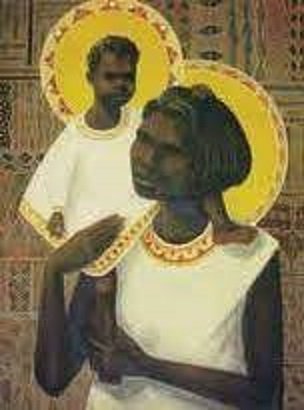May, Month of Mary, Featuring The Madonna of the Aborigines
Aboriginal Madonna - Karel Kupka 1918-1993
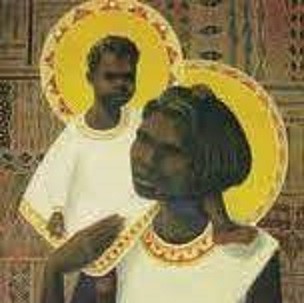
Our Lady of the Aborigines
In the 1950s, exiled Czech artist Karel Kupka, arrived in Arnhem Land. His Catholic faith was subtly remade as he studied the art of indigenous Australia. He brought together these ancient traditions in a striking painting of the Madonna.
It was a great joy to see Karel Kupka's painting of the Aboriginal Madonna when I visited Darwin recently.
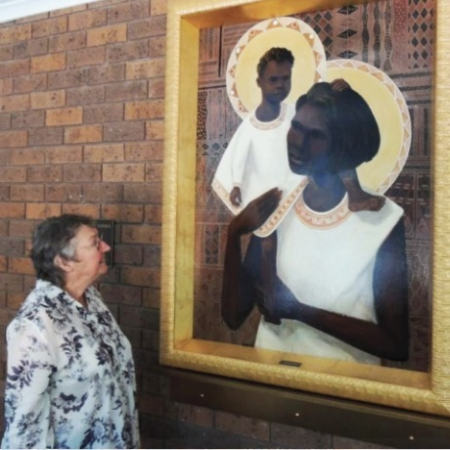
I met Karel at Maningrida while I was working there as a nurse in 1970. He had visited Arnhem Land several times since 1956 to learn about Aboriginal art and he knew many of the artists. He was a charming person who was always interested to learn about the lives and thoughts of those he met and he was always willing to be part of the community where he was staying.
I remember that one evening he cooked dinner for some friends at Maningrida and I was very impressed with the wonderful meal he produced from the limited and diverse ingredients that were available. I am sure he would have been an excellent chef – as well as a lawyer, artist, collector, writer and anthropologist.
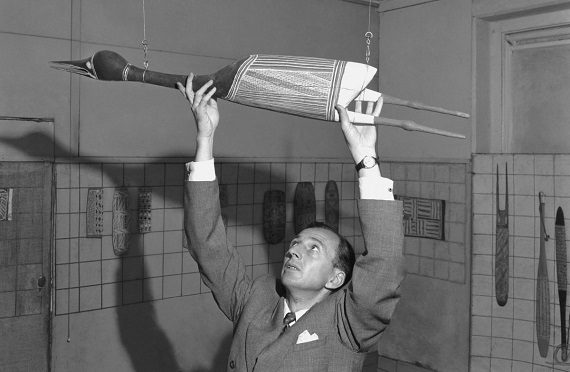
When I left Maningrida I kept in touch with Karel and met him several times when he was visiting Australia. We often talked about the Top End and he told me that when he was working on the early sketches for the Madonna he was on Bathurst Island.
He had intended to stay there but the mosquitoes were worse than usual and when his hands became swollen and painful he knew he had to paint somewhere else.
Older people will remember that when Australia changed to decimal currency in 1966 the one dollar note had the Queen and the Australian coat of arms on one side and images painted by Aborigines on the other.
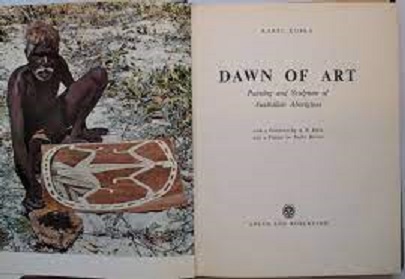
The main image was a bark painting by David Malangi, an artist from Millingimbi. Karel had lobbied the people in Canberra to feature Aboriginal art on the bank note and had submitted the Malangi painting which was part of his collection.
A piece in The Monthly by Nicholas Rothwell explains the origins of the Aboriginal Madonna:
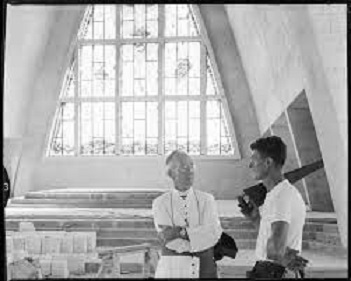
While he was on the Tiwi Islands, Kupka met Bishop John Patrick O'Laughlin... and the bishop, on learning that Kupka was not only a Catholic but an artist, asked him to paint an Aboriginal Madonna for the new cathedral.
Together with the administrator of the Star of the Sea, Fr Frank Flynn, the Bishop showed Kupka the cathedral plans.
Kupka accepted at once, and old-timers in Darwin remember his elation in those days, when he was newly back from the bush and full of stories of adventures, and when his grand ideas were taking shape.

He set up a makeshift studio in one of the schoolrooms of St Mary's Convent, surrounded himself with his haul of carvings and bark paintings, and plunged himself into the task.
For months he had seen beauty and painted nothing; he had been steeped in a world of worship and magic; his own faith had been subtly remade.
Each day, after he had made a beginning, the bishop and Fr Flynn would visit the studio and check on his progress; and they were particularly touched by the solution the artist had found for the problem of the Madonna's pose.
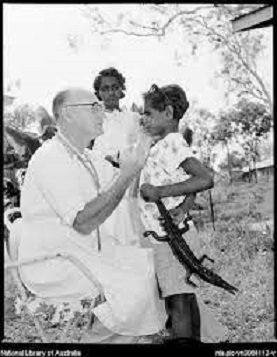
Instead of cradling the Christ-child in her lap, the Madonna is carrying her son on her shoulders, in the fashion of Aboriginal women from the Tiwi Islands and the Daly River, with one of her hands clasping the baby by the ankle and the other resting gently on his hip.
They were also intrigued by the features of the virgin: she had a noticeable air of self-possession about her. They had asked Kupka to present an idealised version of Aboriginal womanhood, blending aspects from different models at the various Catholic missions he had visited.
The Madonna's face, though, was clearly delineated, and her character seemed precisely caught as well, much like the Madonnas of certain Renaissance artists, who have the look of a living individual.
There has been speculation about her story in church circles ever since: some think Kupka based her features on a Tiwi woman; others say she has the manner and the bearing of a young mother from Port Keats.
